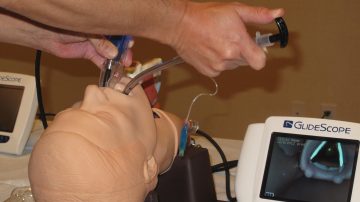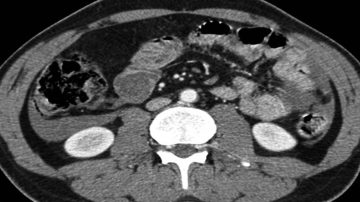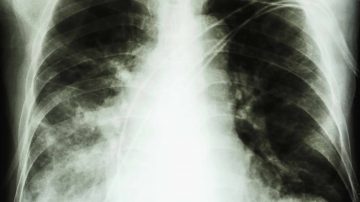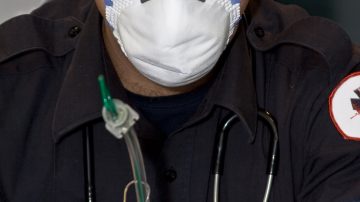In a study conducted at two academic medical centers, records showed that of 71,570 intubations 2,004 used Glidescope for airway management. Success rates and complications were documented in these Glidescope intubations. The overall success rate for Glidescope intubations was 97%.…
Read MoreA recent meta-analysis and systematic review of 13 randomized, placebo-controlled trials analyzed over 2000 patients hospitalized for CAP. The analysis examined whether the addition of systemic corticosteroids doses (20–60 mg of prednisone or steroid equivalent) to empiric antibiotics was any better than…
Read MoreAlthough adult bacterial meningitis (ABM) is rare, the outcomes can be devastating. An area of controversy concerns when to perform lumbar puncture (LP). Because of the possibility of brain herniation, it has been recommended that cerebral computed tomography (CT) be…
Read MoreIn an open-label trial involving adults with complicated intra-abdominal infections at 23 centers in the U.S. and Canada, researchers have investigated whether fixed-duration antimicrobial therapy (4 days) after source control is as effective as the traditional strategy (antibiotic administration until 2 days…
Read MoreLung ultrasound can detect pneumothorax and pulmonary edema, but limited data exist to quantify its accuracy for diagnosing pneumonia. In a prospective study, investigators compared lung ultrasound to chest computed tomography (CT) and chest x-ray among adult patients presenting with…
Read MoreThe U.S. Centers for Medicare and Medicaid Services regards serious preventable hospital-acquired conditions as “never events.” In this study, investigators used a nationwide U.S. hospital database to compare risks for 11 serious hospital-acquired conditions after weekend or weekday admissions. The…
Read MoreMore Articles – Arterial line, Central line, Chest Tube, Emergency Procedures, Endotracheal Intubation, FAST Exam, Glidescope Intubation, Hospital Procedures, King Tube, Lumbar Puncture, Medical General, medical procedures, Needle Decompression, Paracentesis, RUSH Exam, Thoracentesis, Ultrasound-Guided Peripheral IV
Hospitalists are in the ideal position to perform bedside procedures on their patients. They know every aspect about their patients and have had the opportunity to develop a good rapport and the trust of their patients. So, why are they…
Read MoreIn the emergency department (ED), colorimetric or quantitative capnography is the gold standard for confirmation of endotracheal tube placement. Capnography may be unreliable in patients with severe pulmonary obstruction, greatly reduced pulmonary circulation, or cardiac arrest. Transtracheal ultrasound imaging with…
Read MoreTraditional dogma teaches that it is crucial for trauma patients to reach the hospital and be treated within 1 hour of injury (the “golden hour”). Investigators reviewed data from a large trauma registry to determine outcomes for two cohorts of…
Read MoreUse of video laryngoscopy (VL) results in improved glottic views, fewer intubation attempts, and higher intubation success in both operating room and emergency department (ED) patients. Less is known about performance characteristics of VL during urgent inpatient intubations performed in…
Read MoreA Canadian team has performed a population-based case-control study in Ontario to determine whether this interaction might confer risk for sudden death, which can be triggered by hyperkalemia. During an 18-year period, 349 patients (age, ≥66) died suddenly while taking both…
Read MoreDifferences between Traumatic LPs and SAH. How Traumatic lumbar punctures Impact Healthcare Decisions.How to Differentiate Traumatic Lumbar Punctures from Aneurysmal Subarachnoid Hemorrhage The diagnosis of subarachnoid hemorrhage (SAH) often requires lumbar puncture, however, in an estimated 10% to 30% of…
Read MoreThe key points of dual antiplatelet therapy are that there is NO mortality benefit for DAPT vs ASA alone; there is a small but significant decrease in coronary stent thrombosis and major adverse cardiac events, but there is also an…
Read MoreMore Articles – Cardiovascular diseases, Emergency Procedures, medical procedures, Needle Decompression
Previous investigations suggest that survival to hospital discharge following out-of-hospital cardiac arrest (OHCA) has remained stable (7%–8%) over the past 30 years. Recent recommendations regarding bystander and rescuer cardiopulmonary resuscitation (CPR) technique, post-resuscitation protocols, and regionalization of post-arrest care were…
Read MoreHepatic encephalopathy (HE) is one of the major complications of cirrhosis, and recent evidence suggests that hospitalized cirrhotic HE patients with acute decompensation and, especially, acute-on-chronic liver failure (ACLF) have extremely poor outcomes. The current review article discusses the pathophysiology…
Read MoreCategories
- ACLS (1)
- Arterial line (33)
- Cardiovascular diseases (77)
- Central line (55)
- Chest Tube (39)
- Dermatology (4)
- Emergency Procedures (139)
- Endocrinology (6)
- Endotracheal Intubation (36)
- Events (24)
- FAST Exam (12)
- Featured (113)
- Featured Procedure (42)
- Gastrointestinal diseases (32)
- Ginecology (3)
- Glidescope Intubation (21)
- Hematology (33)
- Hospital Procedures (85)
- Infections (32)
- Intraosseous line (8)
- King Tube (27)
- Laryngeal Mask Airway (18)
- Lumbar Puncture (36)
- Mechanical Ventilation (34)
- Medical General (95)
- medical procedures (258)
- Needle Decompression (6)
- Nephrology (11)
- Neurological diseases (12)
- Oncology (4)
- Paracentesis (32)
- Pericardiocentesis (3)
- Procedural Sedation (19)
- Respiratory diseases (85)
- RUSH Exam (8)
- Thoracentesis (37)
- Traumatology (24)
- Travel (27)
- Ultrasound-Guided Peripheral IV (13)










